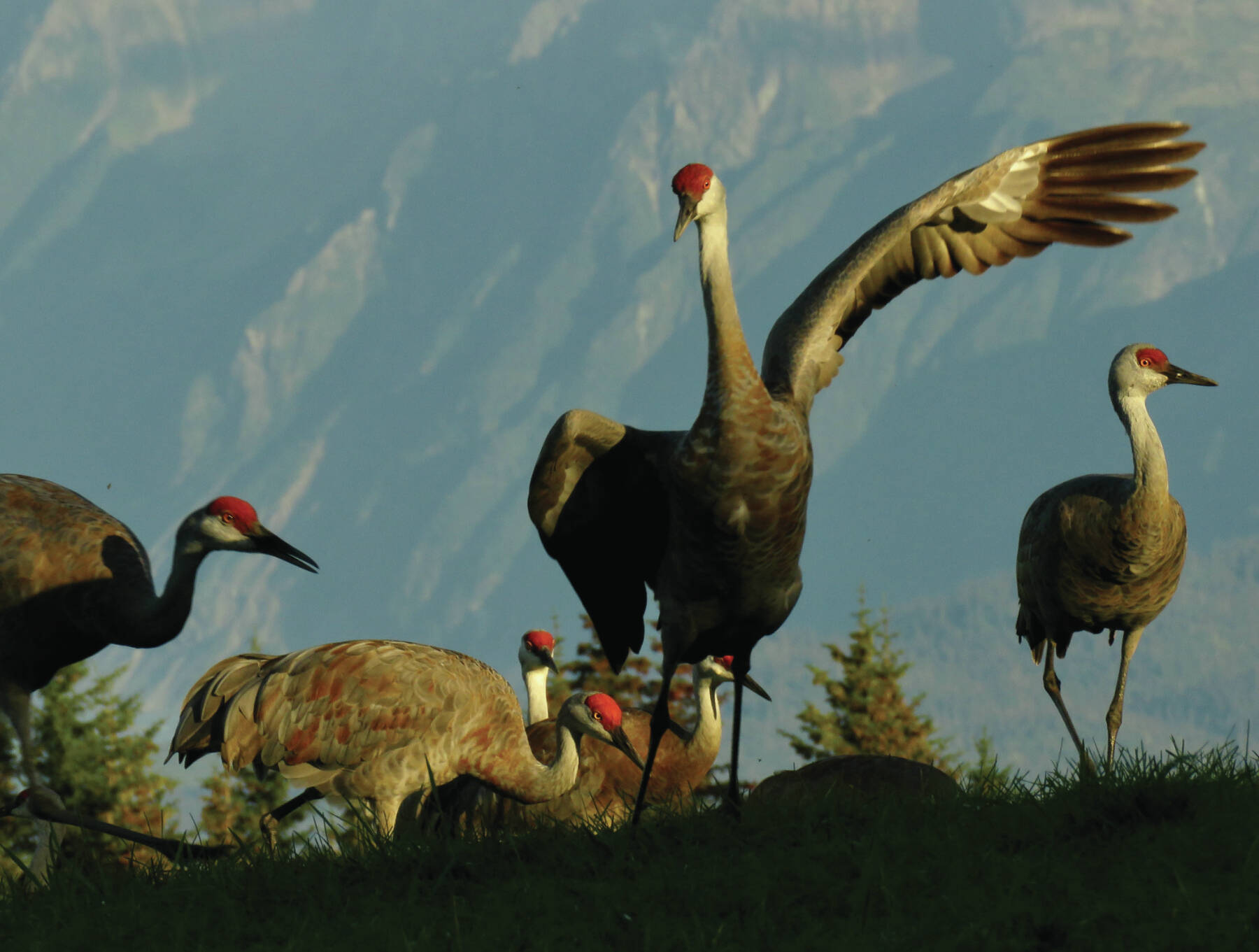Despite a colder and wetter summer, the crane nesting success rate in the Homer area was better than usual this year, according to the Kachemak Crane Watch 2023 annual sandhill crane summary.
According to the summary, there were 61 nests reported this year — with 54 nests successful — for an 88.5% nest success rate.
Success rate — or the survival of colts — is impacted by issues such as predation or bacterial infection. Predators include animals such as coyotes, eagles, crows, ravens and dogs.
According to the summary, which is available on the Kachemak Crane Watch website, the first cranes arrived April 5. Approximately 40 cranes were heard at Beluga Slough on April 10. As the report states, despite the long and cold 2023 winter, “sandhill cranes’ migration is much like clockwork; they showed up pretty much when expected.”
Kachemak Crane Watch, a project of the Center for Alaskan Coastal Studies, was started by Edgard Bailey and Nina Faust to track sandhill cranes from Anchor Point to the head of Kachemak Bay. The first report available on the Kachemak Crane Watch website is from the summer of 2013, but even that report includes a table with crane arrival dates from as early as 2003.
The nesting component of the report is made with the help of cooperating residents who report observations on location, number of eggs hatched, fatalities and number of colts fledged.
Three public crane count days were hosted by the organization on Aug. 19 and Aug. 26 and Sept. 2 and Sept. 7. During these events citizen scientists gather at the picnic table in Beluga Slough at 6 p.m. and participate in counting until sunset. On Aug. 26 counters noted a total of 187 cranes — that is the highest total count number at slough on record, according to the report.
The primary southern migration days this year occurred on Sept. 11 and Sept. 17, with as many as 1,000 flocks of birds flying over Anchor Point and Homer. The last departing flocks were reported on Oct. 2.
The full crane report with appendices and more information about the history of the organization can be found at www.cranewatch.org.


